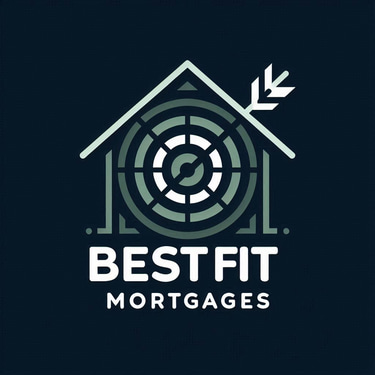SDLT Increase on Second Properties (2024): How Class C4 HMOs Could Help Offset Costs
Starting 31 October 2024, the Stamp Duty Land Tax (SDLT) surcharge on second properties has increased from 3% to a flat 5% on top of the standard SDLT rates. This affects all new purchases of second properties, making it crucial for investors to account for this updated cost. A practical approach to balance the impact of this surcharge could be by converting properties from C3 use Class to C4 use Class House in Multiple Occupation (HMO), which permits occupancy by up to six households without planning permission or prior approval (in areas without Article 4 restrictions). Here’s a breakdown of the SDLT changes and how HMO conversion could help offset the increased costs.
Best Fit Mortgages LTD
11/6/20243 min read


New SDLT Rates for Second Properties as of 31st October 2024
The new 5% surcharge on second properties (up from the previous 3%) is applied on top of the standard SDLT rates, as shown below:
The higher rates from 31 October 2024 to 31 March 2025
Property value:
Up to £250,000 Rate: 5%
£250,001 to £925,000 (next £675,000) Rate: 10%
£925,001 to £1.5 million (next £575,000) Rate: 15%
Above £1.5 million Rate: 17%
Expected Upcoming Change in April 2025: As of 1 April 2025, it is anticipated that the SDLT rate for properties valued between £125,000 and £250,000 will increase from 0% to 2%. For second properties, this means the total SDLT rate in this range could become 7% (a 5% surcharge plus the anticipated 2% standard rate)
These rates apply to all second property purchases completed on or after 31 October 2024, marking a significant shift in SDLT costs from the previous structure.
Leveraging Class 4 HMO Conversion to Offset the 5% SDLT Increase
To manage the increased SDLT costs, converting properties to Class C4 HMO provides a strategic option, particularly in areas without Article 4 restrictions. Here’s how a Class C4 setup can help:
Increased Rental Income with Multi-Tenant Options
Class C4 HMO allows occupancy by up to six households, substantially boosting rental income potential. This additional revenue can help offset the 5% SDLT surcharge, improving the overall return on investment.Simplified Conversion Process
Where Article 4 restrictions do not apply, converting from Class C3 to Class C4 does not require planning permission or prior approval. This allows for quicker conversions, enabling investors to respond promptly to rental demand.Enhanced Financial Stability
Generating income from multiple tenants in a Class C4 HMO provides a stable cash flow, helping to balance SDLT-related expenses more effectively. This makes second property investments more resilient under the new SDLT rates.
Frequently Asked Questions on the New SDLT Surcharge and HMO Conversions
Here’s a brief FAQ to clarify common questions about these updates:
Q: What is the new SDLT surcharge for second properties as of October 2024?
A: The surcharge has increased from 3% to a flat 5%, meaning SDLT for second properties begins at 5% on properties valued up to £250,000 and increases according to each band.Q: How does the April 2025 increase impact SDLT on second properties?
A: From 1 April 2025, the standard SDLT rate on properties within the £125,000 - £250,000 range will increase from 0% to 2%. For second properties, the total SDLT rate in this range will become 7% (5% surcharge + 2% standard rate).Q: How can converting to an HMO help with SDLT costs?
A: HMO conversions increase rental income potential, helping to balance the 5% SDLT surcharge by generating income from multiple households.Q: Do I need planning permission to convert to a Class C4 HMO?
A: Without Article 4 restrictions, Class C4 could allow for up to six households without planning permission or prior approval.
Is a Class 4 HMO Conversion Right for Your Investment?
If you’re considering a Class C4 HMO conversion, take into account:
Rental Demand in the Area: Is there demand for multi-tenant properties?
Local Regulations: Check if Article C4 restrictions affect the property.
Revenue vs. SDLT Costs: Assess whether income from six households can effectively offset the increased SDLT surcharge.
Evaluating these factors will help determine if a Class C4 HMO aligns with your investment goals and offers a sound solution to the SDLT surcharge.
Key Takeaways
The SDLT increase from 3% to 5% on second properties highlights the need for more efficient strategies. Class C4 HMO conversion offers a way to leverage higher rental yields to offset these costs. Staying informed helps investors make better choices and optimize returns.
Ready to maximize your returns despite the new SDLT rates?
BEST FIT MORTGAGES LTD
T: 01744411604
E: contact@bestfitmortgages.co.uk
Your property may be repossessed if you do not keep up repayments on your mortgage or loans secured on it.
Best Fit Mortgages LTD Registered office address: 60 Chiltern Road, St. Helens, England, WA9 2HT. Registered in England and Wales No: 15722235
Making a complaint: It is our intention to provide you with a high level of customer service at all times. If there is an occasion when we do not meet these standards and you wish to register a complaint, please write to: Compliance Department; Connect IFA Ltd, 39 Station Lane, Hornchurch, RM12 6JL or call: 01708 676110. If you cannot settle your complaint with us, you may be entitled to refer it to the Financial Ombudsman Service www.financial-ombudsman.org.uk
Best Fit Mortgages LTD is an Appointed Representative of Connect IFA Limited 441505 which is Authorised and Regulated by the Financial Conduct Authority and is entered on the Financial Services Register under reference 1017669. The FCA do not regulate some forms of Business Buy to Let Mortgages and Commercial Mortgages to Limited Companies. A fee will be payable for arranging your mortgage. Your consultant will confirm the amount before you choose to proceed, but this is typically 0.5% of the mortgage balance, e.g. £500 for a mortgage of £100000. The guidance and/or advice contained within this website is subject to the UK regulatory regime and is therefore primarily targeted at consumers based in the UK.
© 2024. All rights reserved.
Commission disclosure: We are a credit broker and not a lender. We have access to an extensive range of lenders. Once we have assessed your needs, we will recommend a lender(s) that provides suitable products to meet your personal circumstances and requirements, though you are not obliged to take our advice or recommendation. Whichever lender we introduce you to, we will typically receive commission from them after completion of the transaction. The amount of commission we receive will normally be a fixed percentage of the amount you borrow from the lender. Commission paid to us may vary in amount depending on the lender and product. The lenders we work with pay commission at different rates. However, the amount of commission that we receive from a lender does not have an effect on the amount that you pay to that lender under your credit agreement.
Not all services we offer are covered by the FCA.


